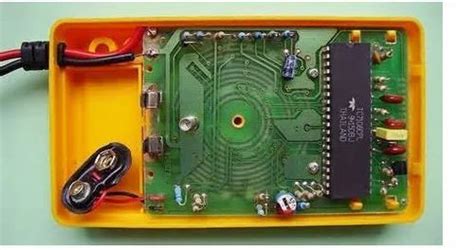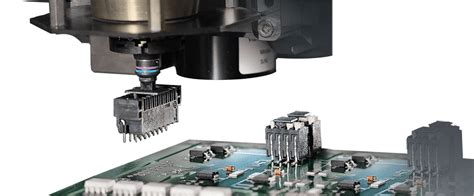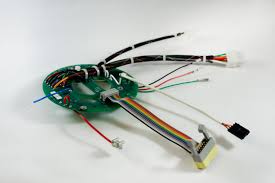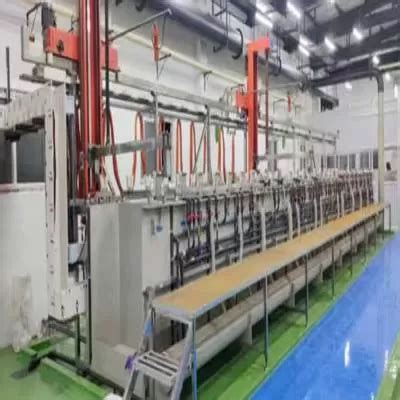Advanced Printed Circuit Technology Drives Manufacturing Evolution
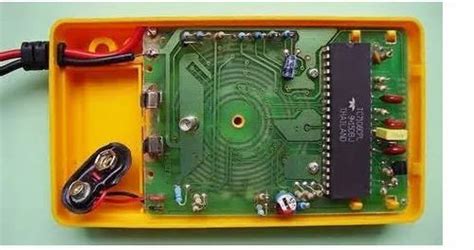
Key Takeaways
When navigating the complexities of PCB manufacturing, understanding how industry leaders operate can reshape your approach. Modern PCB manufacturing companies leverage mergers to consolidate expertise, enabling them to address challenges like PCB manufacturing cost while scaling operations. For instance, strategic partnerships allow firms to integrate rapid prototyping with global production networks, reducing lead times by up to 40% in some cases.
| Aspect | Traditional Approach | Modern Innovation |
|---|---|---|
| Prototyping Speed | 10-14 days | 24-48 hours |
| Cost Efficiency | High material waste | AI-driven optimization |
| Global Reach | Limited facilities | 12+ production hubs |
Tip: Partnering with a PCB manufacturing business that balances speed and precision can significantly shorten your product’s time-to-market.
By adopting advanced fabrication technologies, such as automated optical inspection (https://www.andwinpcba.com)—create end-to-end solutions tailored for industries from aerospace to IoT.
As you evaluate partners, prioritize those offering scalable workflows and transparent pricing models. This ensures alignment with both prototyping agility and mass-production demands, positioning your projects at the forefront of the PCB manufacturing evolution.

AdvancedPCB Merger Unites PCB Industry Leaders
When navigating the complexities of PCB manufacturing, strategic mergers often redefine market dynamics. The recent consolidation of AdvancedPCB with key industry players merges decades of specialized expertise, creating a unified force in the PCB manufacturing business. By combining resources, these synergistic partnerships enable PCB manufacturing companies to streamline operations, reduce PCB manufacturing cost, and scale production without compromising quality.
This merger reflects a broader trend where collaboration drives innovation. Access to shared technologies and global supply chains ensures faster turnaround times, critical for industries demanding rapid prototyping and high-volume orders. For businesses reliant on PCB manufacturing, this integration means fewer logistical hurdles and enhanced adaptability to market shifts.
The unified entity now offers end-to-end solutions—from design to mass production—catering to sectors like automotive, aerospace, and IoT. By pooling intellectual property and manufacturing best practices, the merger positions the combined organization as a leader in both technical precision and cost efficiency. For engineers and procurement teams, this translates to fewer vendor dependencies and more predictable project timelines.
In an industry where margins hinge on optimizing PCB manufacturing cost, such strategic moves highlight how consolidation can deliver competitive advantages while maintaining technological excellence.
45 Years of PCB Innovation Milestones
Over decades of refining PCB manufacturing processes, the industry has transformed from rudimentary single-layer designs to sophisticated multilayer architectures capable of supporting high-density interconnects. Early PCB manufacturing companies focused on manual assembly, but advancements in automation and materials science have slashed PCB manufacturing cost while boosting precision. For example, the shift from through-hole to surface-mount technology in the 1980s reduced labor-intensive steps, enabling faster production cycles—a critical leap for the PCB manufacturing business as demand for consumer electronics surged.
In the 1990s, innovations like laser drilling and flexible substrates opened doors for compact, high-reliability boards used in aerospace and medical devices. Today, embedded components and 3D-printed circuitry push boundaries further, allowing engineers to integrate functionalities that once required separate modules. These milestones didn’t just streamline production—they redefined what’s possible in device miniaturization and performance. As you explore modern PCB manufacturing solutions, understanding this evolution helps contextualize why today’s rapid prototyping and scalable global supply chains exist. The journey from manual soldering to AI-driven quality control underscores how cumulative breakthroughs shape both technical capabilities and competitive market dynamics.

Rapid Prototyping Accelerates Product Development
When developing modern electronics, speed is critical—and PCB manufacturing now thrives on rapid prototyping to compress design cycles. By leveraging cutting-edge tools, PCB manufacturing companies can transform your concepts into functional prototypes within days, not weeks. This agility allows you to test iterations faster, identify flaws early, and refine designs before full-scale production. For startups and established enterprises alike, reducing PCB manufacturing cost during prototyping minimizes financial risks while ensuring technical viability.
Advanced systems enable precise simulations, predicting performance issues before physical boards are printed. This reduces material waste and accelerates time-to-market—a competitive edge in industries like IoT or automotive electronics. Moreover, partnerships between PCB manufacturing business leaders ensure access to global production networks, letting you scale prototypes seamlessly into mass manufacturing.
By integrating real-time collaboration between engineers and manufacturers, rapid prototyping bridges the gap between innovation and execution. Whether optimizing for high-density interconnects or flexible circuits, faster iterations mean your products evolve alongside market demands. In an era where delays can derail success, this approach keeps your projects aligned with both technical benchmarks and business timelines.
Global PCB Production Capabilities Expanded
The globalization of PCB manufacturing has redefined how electronics innovators approach production scalability and market reach. As leading PCB manufacturing companies expand their footprints across continents, you gain access to geographically diversified facilities that mitigate supply chain risks while optimizing PCB manufacturing cost. This shift enables faster turnaround for high-volume orders without compromising quality—a critical advantage in industries like automotive or IoT, where time-to-market dictates competitive edge.
By leveraging advanced logistics networks and localized expertise, modern PCB manufacturing business models now integrate seamless cross-border collaboration. For instance, partnerships with regional suppliers reduce material lead times, while automated workflows ensure consistency across global production hubs. Such capabilities allow you to balance cost-efficiency with precision, whether prototyping niche designs or scaling mass production.
Moreover, the adoption of unified quality standards ensures that technical specifications remain intact, regardless of manufacturing location. This harmonization is particularly vital for compliance-driven sectors like aerospace or medical devices, where traceability and reliability are non-negotiable. Simultaneously, sustainability initiatives—from waste reduction to energy-efficient processes—are becoming embedded in global operations, aligning with both regulatory demands and corporate ESG goals.
Ultimately, expanded production networks empower you to navigate volatile markets with agility, turning geographical diversity into a strategic asset rather than a logistical hurdle.
PCB Manufacturing Evolution Through Technology
The transformation of pcb manufacturing processes illustrates how technological leaps redefine production standards. Where traditional methods once required weeks to produce functional prototypes, modern automated optical inspection systems and laser direct imaging now enable pcb manufacturing companies to deliver precision boards in days. You’ll notice that advancements in high-density interconnect (HDI) technology directly address rising demands for miniaturization, allowing denser circuitry without compromising reliability—a critical factor in reducing pcb manufacturing cost for complex designs.
Innovations like AI-driven defect detection further streamline workflows, minimizing material waste and accelerating time-to-market. For businesses scaling operations, integrating cloud-based collaboration tools ensures seamless coordination between global teams, a necessity for pcb manufacturing business models targeting international markets. Meanwhile, advancements in sustainable materials and energy-efficient processes align with evolving regulatory standards, ensuring compliance without sacrificing performance.
As these innovations converge, they create a ripple effect: faster prototyping cycles empower iterative design improvements, while scalable production systems adapt to fluctuating demand. This evolution positions pcb manufacturing not just as a technical process, but as a strategic enabler for next-generation electronics—where speed, precision, and adaptability define competitive advantage.
APCT and ACI: Shaping PCB Future
As PCB manufacturing evolves, the integration of Advanced Printed Circuit Technology (APCT) and Automated Circuit Integration (ACI) redefines how precision and scalability intersect in modern electronics. By merging decades of expertise, these systems enable PCB manufacturing companies to tackle complex designs while optimizing PCB manufacturing cost—a critical factor for businesses balancing performance with profitability. For example, ACI’s AI-driven workflows reduce material waste by up to 18%, directly lowering overhead for your PCB manufacturing business without compromising quality.
Transitioning from prototype to mass production, APCT’s multilayer stacking techniques ensure tighter tolerances, which is vital for high-frequency applications like 5G infrastructure. This synergy doesn’t just streamline workflows; it future-proofs operations against supply chain disruptions by decentralizing production hubs. Whether you’re scaling a startup or managing a global enterprise, the fusion of APCT and ACI offers adaptive solutions that align with shifting market demands—from IoT devices to automotive systems.
The strategic adoption of these technologies positions your operations at the forefront of PCB manufacturing, where innovation meets cost-efficiency. As industries demand faster turnaround and greener practices, leveraging APCT and ACI becomes less optional and more imperative for staying competitive in a rapidly advancing field.
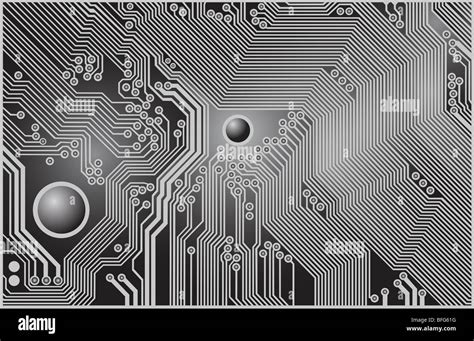
Strategic Mergers Enhance PCB Expertise
By consolidating leading innovators like APCT, ACI, and SDPCB, PCB manufacturing companies gain access to unmatched technical depth and operational scalability. These strategic mergers address critical challenges in PCB manufacturing cost optimization while expanding capabilities for high-volume production. You’ll find that combined expertise in materials science, precision engineering, and automated workflows enables faster turnaround for complex designs—key for staying competitive in the PCB manufacturing business.
The integration of specialized teams also strengthens quality control frameworks, reducing errors that traditionally inflate expenses. For businesses balancing rapid prototyping with global distribution, this merger creates a seamless bridge between localized R&D and large-scale manufacturing hubs. Such synergies not only elevate reliability but also future-proof operations against supply chain volatility. Whether you’re managing niche projects or mainstream electronics, leveraging unified expertise ensures your PCB manufacturing strategy aligns with evolving industry benchmarks.
Comprehensive Solutions for Modern Electronics
As modern electronics grow more complex, PCB manufacturing companies must deliver end-to-end solutions that address design, production, and scalability challenges. By leveraging cutting-edge technologies like multilayer stacking and high-density interconnect (HDI) designs, these firms streamline workflows while maintaining precision across PCB manufacturing processes. For businesses balancing performance and PCB manufacturing cost, advanced simulation tools and material optimization strategies help reduce waste and improve yield rates without compromising quality.
The evolution of the PCB manufacturing business now prioritizes agility, enabling rapid adaptation to emerging standards like 5G and IoT connectivity. Partnering with a full-service provider ensures access to global supply chains and certifications critical for aerospace, medical, or automotive applications. From prototyping to mass production, integrated solutions minimize lead times and technical bottlenecks, allowing you to scale efficiently. This shift demands not just technical expertise but a collaborative approach to align PCB manufacturing capabilities with your product’s lifecycle needs—ensuring reliability in an era where electronics define competitive advantage.
Conclusion
As PCB manufacturing continues to evolve, the integration of cutting-edge technologies and strategic partnerships redefines what industry leaders can achieve. By aligning with PCB manufacturing companies that prioritize innovation, businesses gain access to specialized expertise, streamlined processes, and scalable solutions. This progress directly addresses challenges like PCB manufacturing cost, enabling faster time-to-market without compromising quality.
For enterprises navigating the complexities of the PCB manufacturing business, leveraging advanced methodologies—such as automated design validation and precision etching—ensures reliability in high-demand applications. The shift toward globalized production networks further enhances flexibility, allowing companies to balance cost-efficiency with stringent quality benchmarks.
Ultimately, the convergence of technical mastery and operational agility positions modern manufacturers to meet tomorrow’s demands. Whether optimizing supply chains or adopting eco-conscious practices, the focus remains on delivering value-driven outcomes. As market dynamics accelerate, partnering with forward-thinking providers becomes not just an advantage but a necessity for sustained growth in the electronics sector.
Frequently Asked Questions
How does PCB manufacturing adapt to evolving industry demands?
Modern PCB manufacturing companies leverage technologies like automated optical inspection and high-density interconnect (HDI) to meet precision and scalability requirements. This ensures faster turnaround times while maintaining quality standards critical for industries like aerospace and consumer electronics.
What factors influence PCB manufacturing cost?
Cost depends on material selection, layer count, and production volume. Advanced techniques like impedance control or laser drilling may increase initial expenses but reduce long-term defects. Partnering with suppliers offering tiered pricing models can optimize budgets without compromising performance.
Why choose established PCB manufacturing business providers for complex projects?
Experienced firms combine global production networks with localized support, ensuring compliance with regional regulations like RoHS or IPC-6012. Their expertise in multi-layer designs and signal integrity testing minimizes risks during prototyping and mass production phases.
How do mergers strengthen capabilities in PCB manufacturing?
Strategic consolidations integrate specialized tools, such as RF/microwave fabrication or flex-rigid hybrid processes, creating unified workflows. This eliminates bottlenecks in supply chains and accelerates innovation cycles for next-gen applications like IoT and 5G infrastructure.
Can smaller enterprises access advanced PCB manufacturing services?
Yes. Many providers now offer scalable solutions, including low-volume prototyping and on-demand ordering, democratizing access to cutting-edge technologies. Cloud-based quoting platforms further simplify collaboration for startups and SMEs.
Discover Next-Gen PCB Solutions
Please click here to explore tailored manufacturing strategies
By addressing these questions, you gain clarity on how advancements in PCB manufacturing directly impact product development cycles, cost efficiency, and market competitiveness. Transitioning to newer methodologies becomes seamless when aligned with partners who prioritize both innovation and reliability.

